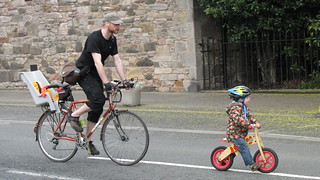Fascinating stuff. On Beeb 4 just now.
I never want to get in a car again!
CityCyclingEdinburgh was launched on the 27th of October 2009 as "an experiment".
IT’S TRUE!
CCE is 16years old!
Well done to ALL posters
It soon became useful and entertaining. There are regular posters, people who add useful info occasionally and plenty more who drop by to watch. That's fine. If you want to add news/comments it's easy to register and become a member.
RULES No personal insults. No swearing.

Fascinating stuff. On Beeb 4 just now.
I never want to get in a car again!
Repeated from the thread on safety awareness campaigns.
I really do recommend Horizon's Guide to Car Crashes, now on iPlayer.
It's interesting to note the different stages government and manufacturers went through to try and reduce road fatalities and injuries over the past 60 years.
First, they established that most collisions were the result of driver error, and specifically poor judgements. Imbibing alcohol was proved to impair judgement even further, causing 2/3 of casualties. Widespread road safety information campaigns were largely ineffective as drivers just ignored the advice. So they targeted driver behaviour with breathalyser tests and enforcement.
Then they tried to force drivers to change risky behaviour at junctions through cheap and easy solutions: traffic islands and mini roundabouts.
Next they showed that the design of cars was not safe for the occupants. So they built in crumple zones, roll cages, etc. provided three point seatbelts. Drivers were not wearing their belts so they had to legislate and enforce that to save lives. Finally manufacturers softened car interiors with padded surfaces and airbags.
Motor vehicle occupants are still killed and injured, but the numbers and the rate have declined sunstantially.
The lesson I draw from this fascinating documentary for cycling is this:
1. Identify the problem (cyclist deaths and injuries).
2. Prove what causes the problem (mostly motor vehicle driver error).
3. Try to change behaviour causing the problem (legislation, enforcement).
4. Engineer the infrastructure to change behaviour or lessen risk (junction design, segregation).
5. Modify vehicles causing deaths and injuries to make them safer for the likely victims (design of HGVs, commercial vehicles, private vehicles to minimise injuries to vulnerable road users).
You can see that as we go further down the list, the steps become more difficult and costly to achieve. History shows us that this is why safety immprovements occur in this order.
So, cycle campaigners should maybe focus on targetting the improvements that are achievable easily as a priority, then turn attention to the next stage. For me, that means 'we' need to campaign more vociferously for strict liability legislation as a first step. It really would be very simple for parliament, the legal system and insurers etc. to implement. Then the engineering stuff that takes a lot longer can be worked on.
You must log in to post.

 Cycling in Edinburgh Flickr group
Cycling in Edinburgh Flickr group
Video embedded using Easy Video Embed plugin